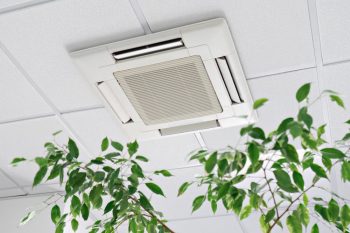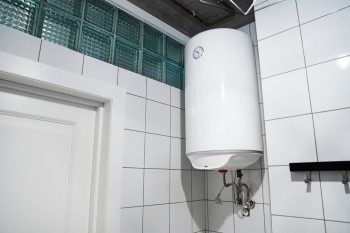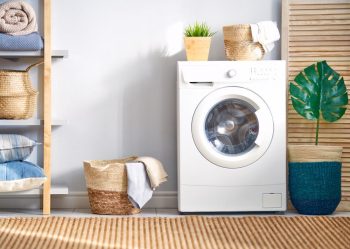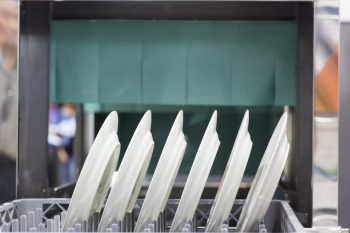
In the midst of winter, the last thing you want is to feel a cold draft while taking a hot shower. One common and often overlooked source of this discomfort is the bathroom extractor fan. This article will provide you with an in-depth understanding of why cold air might be entering your bathroom through the extractor fan and how to prevent it.
To stop cold air from coming through your bathroom extractor fan, first identify if there’s a draft, check the backdraft damper, inspect the ductwork, and examine the exterior vent. Address the issue by checking the extractor fan’s seal, insulating around the fan, installing a backdraft damper, sealing gaps and cracks, and upgrading the ductwork. Regular maintenance and checks can help prevent future cold air leakage.
Identifying the Issue
Before you can solve the problem, you need to identify if your extractor fan is indeed allowing cold air into the bathroom. There are a few signs to look out for:
- Feel for a draft: Place your hand near the extractor fan when it’s not in use. If you feel cold air coming through, it’s likely that the fan is letting cold air in.
- Check the backdraft damper: Bathroom fans should have a one-way backdraft damper that prevents cold air from entering the bathroom when the fan is not in use. If the damper is missing or not functioning properly, cold air can enter the bathroom through the ductwork.
- Inspect the ductwork: The ductwork connecting the fan to the outside vent should be properly sealed and insulated. If there are gaps or insufficient insulation, cold air can enter the bathroom through the ductwork.
- Examine the exterior vent: The exterior vent should have a flap or hood that prevents cold air from entering the ductwork when the fan is not in use. If the flap or hood is damaged or missing, cold air can enter the bathroom through the vent.
Addressing the Problem
Once you’ve identified that your extractor fan is indeed letting cold air in, it’s time to address the problem. Here are some effective methods to stop this:
- Check the extractor fan’s seal: Ensure that the seal around your extractor fan is intact and not allowing cold air to seep in.
- Insulate around the extractor fan: Insulating around the fan can help keep cold air out and reduce noise levels. You can use foam or other insulating materials to achieve this.
- Install a backdraft damper: A backdraft damper ensures that air flows only in one direction and prevents unwanted airflows. If your extractor fan doesn’t have one or if it’s not functioning properly, consider installing a new double backdraft damper.
- Seal gaps and cracks: Use caulk or metal tape to seal any gaps and cracks around the fan housing, ducts, and exterior vent.
- Upgrade ductwork: If your bathroom ductwork is old or inefficient, consider upgrading it with insulated flex duct to prevent cold air infiltration.
Preventative Measures
To avoid cold air leakage through your extractor fan in the future, it’s important to carry out regular maintenance and checks. Here are some preventative measures to consider:
- Clean the fan regularly: This helps to maintain the fan’s function and prolong its lifespan.
- Inspect and maintain the outside cap: If the hood’s duct has a wall cap, it should have a spring holding its damper shut when the fan is off. Check the damper for proper functioning and replace it if necessary.
- Lubricate the motor and fan: Regularly lubricate the motor and fan to ensure smooth operation and prevent wear.
- Check fan blades for balance: Unbalanced fan blades can cause vibration and reduce the fan’s efficiency.
- Inspect electrical wiring and cords: Regularly check the wiring and cords for any signs of damage or wear.
By taking these steps to stop cold air from entering your bathroom through the extractor fan, you can maintain a comfortable temperature in your bathroom even during the coldest months. Remember, if you’re not comfortable working with electrical appliances or on a ladder, consider hiring a professional to help with the installation or repair. Stay warm and enjoy your bathroom comfort!
Frequently Asked Questions
What materials can I use to seal the gaps and cracks around the fan housing, ducts, and exterior vent?
You can use a variety of materials to seal these areas, including HVAC foil tape, silicone caulk, or duct sealing mastic. These materials are designed to withstand the elements and are effective at sealing gaps and cracks.
How often should I clean and maintain my bathroom extractor fan?
It’s recommended to clean and maintain your extractor fan at least once a year. Regular maintenance helps to maintain the fan’s function and prolong its lifespan. However, if you notice any change in performance or noise level, you should inspect and clean it immediately.
How can I tell if my fan blades are unbalanced?
Unbalanced fan blades can cause the fan to vibrate or produce unusual noise. If you notice any of these signs, turn off the fan and visually inspect the blades for any signs of damage or dirt build-up that could cause an imbalance.
What is a backdraft damper and how does it work?
A backdraft damper is a one-way valve that allows air to flow in one direction only. When the fan is on, the damper opens to allow air to be extracted from the bathroom. When the fan is off, the damper closes to prevent cold air from entering the bathroom through the ductwork.
Can I install a backdraft damper myself, or should I hire a professional?
If you’re comfortable with DIY projects, you can install a backdraft damper yourself. However, if you’re not comfortable working with ductwork or on a ladder, or if you’re unsure about the process, it’s best to hire a professional.












